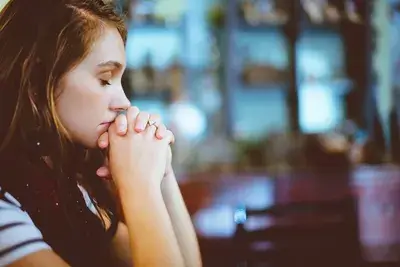
Category: Catholic Motivation
-

Free Printable HandBook |
Read More: Free Printable HandBook |Saint Louis-Marie de Montfort’s 33 DaysTotal Consecration to Jesus Through Mary Powered By EmbedPress
-

Watch “Miracle Hour – A method of prayer that will change your life” by Linda Schubert
Read More: Watch “Miracle Hour – A method of prayer that will change your life” by Linda Schuberthttps://youtu.be/kscXVKAJn9c?si=jiWW93ADDdyiG2bS Download the prayer journal below! Powered By EmbedPress
-

Couldn’t you watch with me one hour? How to Pray a Holy Hour, a Minute-by-Minute Guide
Read More: Couldn’t you watch with me one hour? How to Pray a Holy Hour, a Minute-by-Minute GuideTo pray a holy hour, all you need is a tabernacle with a lit sanctuary lamp, a Bible, and perhaps a Compendium of the Catechism of the Catholic Church (available online). Three Rules 1. Be Silent. Don’t rattle prayers or silently review stresses. Be still exteriorly and interiorly. 2. Be Attentive. It’s not simply a reading hour…
-

An Essential Guide to Catholic Meditation
Read More: An Essential Guide to Catholic MeditationWhat Is Meditation and How Does It Benefit Catholics? At its most basic definition, meditation is a method that helps people relax. When you meditate, you intentionally breathe deeper and relax your muscles. Your racing thoughts will calm down, and for a moment, the busyness of life comes to a halt. It’s just you and…
-

Why Sr. Lucia did not see the Miracle of the Sun at Fatima
Read More: Why Sr. Lucia did not see the Miracle of the Sun at FatimaWhile a large group of people witnessed the sun “dance” on October 13, 1917 near Fatima, Portugal, the three shepherd children did not see the miracle. Sr. Lucia explains in her memoirs that the visionaries saw a different apparition. After our Lady had disappeared into the immense distance of the firmament, we beheld St. Joseph with…
-

BEWARE! Symptoms of an evil spirits action within YOU!
Read More: BEWARE! Symptoms of an evil spirits action within YOU!Symptoms of demonic interference may appear on various surfaces and be characterized by various scales of intensity, apply to people, animals, places and objects. An exorcist priest’s task is to recognise the scope of the evil spirit’s action in a given case. His evaluation is usually conducted after medical examinations in order to exclude, e.g.…
Search
Popular Posts
-
🙏 A New Chapter Begins: Supporting Pope Leo XIV with Prayer and Hope | W/ Daniel O’Connor
“Give the new pope a break and support him with your prayers.”–…
-
Possible Candidates for The Next Pope!
Some Candidates for the New Papacy Today we will share with you…
Categories
Archives
Tags
#Miracles (103) 2023 (4) 2024 (4) approved miracles (2) catholic (142) catholic blog (376) catholic meditations (7) catholic miracles (372) catholic motivation (2) catholic news (372) catholic prayers (4) CatholicSeers (359) catholic vlog (376) catholic websites (6) Eucharistic miracle (2) fr jim blount (3) GisellaCardia (11) hamas (3) imitation of christ (2) Israel (4) israel live (5) Israel news (9) jesus (3) jesus christ (4) Latest messages (11) lent 2023 (10) lent 2024 (4) lent homily (2) lent retreat (4) lent retreat 2023 (3) Lourdes (2) messages from god (6) MessagesFromHeaven (365) miracles of catholic church (2) mother and refuge (2) ourlady (325) OurLadyApparitions (22) our lady of lourdes (2) Pope (2) POPE francis (3) pope francis news (2) prayers (3) real miracles (357) sacred heart of jesus (2) The Miracles of Lourdes (2)








